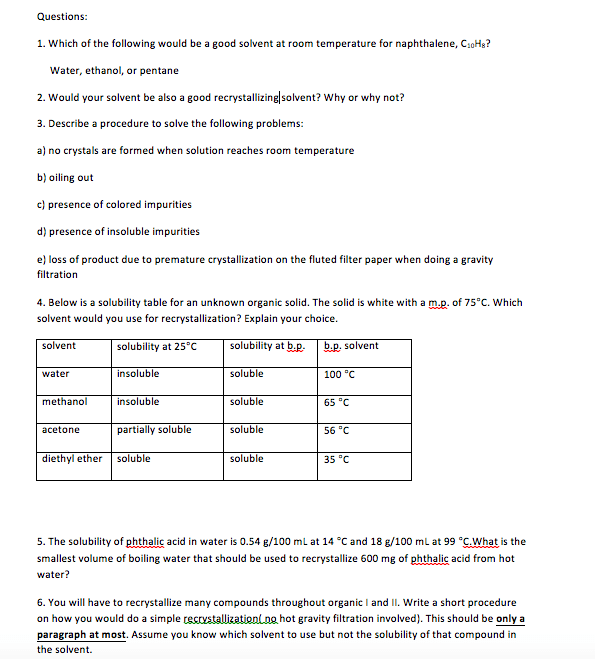1. What can one do to obtain a second crop of crystals after initial crystals have been collected? What is the drawback of this method? 2) You are given a unknown white solid to recrystallize in lab. The white solid could be Compound A (melting point 74-76°C), Compound B (melting point 91-93°C) or Compound C (melting point 85-86°C). Compound A, B and C are significantly soluble in ethanol (bp: 78°C), even at room temperature and not very soluble in 2-butanone (bp: 80°C). Ethanol and 2-butanone are miscible. a) If you decide to use ethanol and 2-butanone as the solvent pair for the unknown white solid, describe which solvent you would heat up and dissolve the solid in initially and which solvent you would add second and at what point would you stop adding the second solvent. b) If you could use ethanol as the single recrystallization solvent for the solid, which compound might have a problem of oiling out and why? 3) What is the advantage and disadvantage of the low boiling point of acetone when it is used as a recrystallization solvent?
1. What can one do to obtain a second crop of crystals after initial crystals have been collected? What is the drawback of this method? 2) You are given a unknown white solid to recrystallize in lab. The white solid could be Compound A (melting point 74-76°C), Compound B (melting point 91-93°C) or Compound C (melting point 85-86°C). Compound A, B and C are significantly soluble in ethanol (bp: 78°C), even at room temperature and not very soluble in 2-butanone (bp: 80°C). Ethanol and 2-butanone are miscible. a) If you decide to use ethanol and 2-butanone as the solvent pair for the unknown white solid, describe which solvent you would heat up and dissolve the solid in initially and which solvent you would add second and at what point would you stop adding the second solvent. b) If you could use ethanol as the single recrystallization solvent for the solid, which compound might have a problem of oiling out and why? 3) What is the advantage and disadvantage of the low boiling point of acetone when it is used as a recrystallization solvent?


